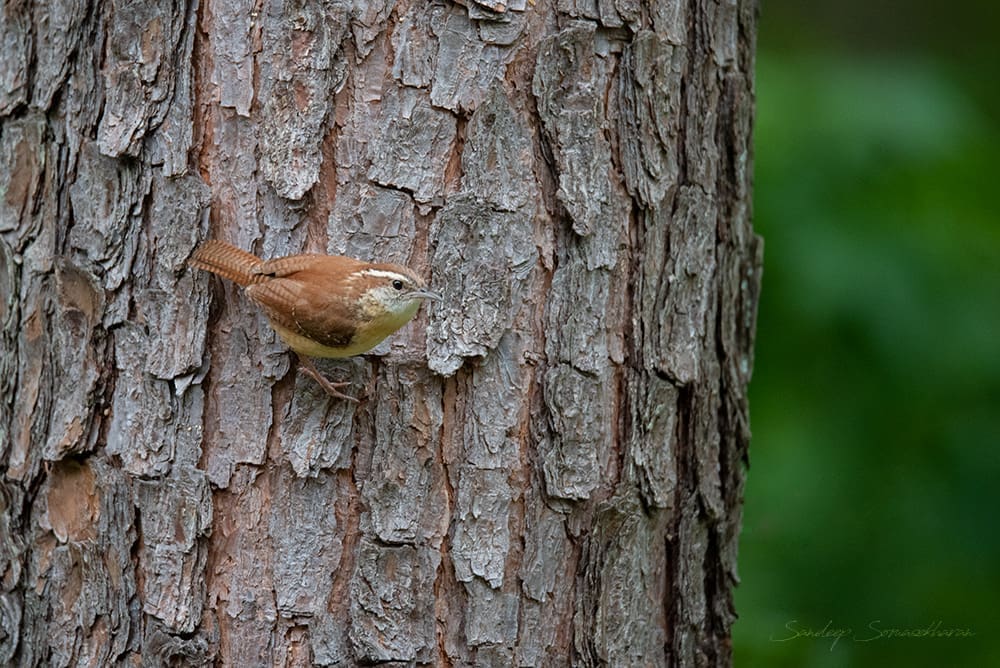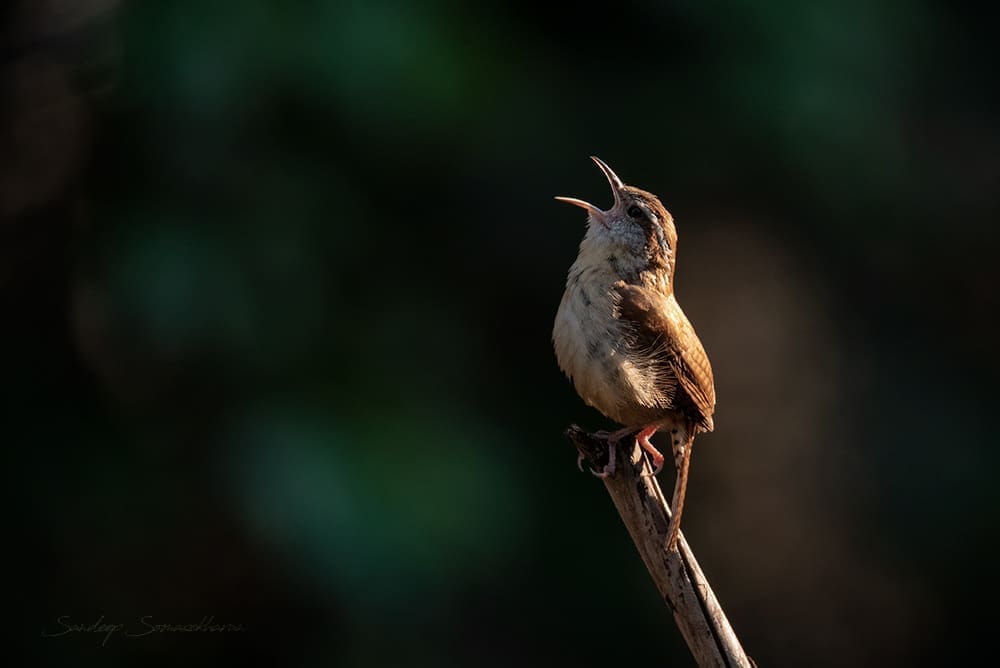Late spring affords me a rare opportunity to sleep with the windows open. It was during one such morning that I woke up to a rapturous, incessant song. It came from the undergrowth outside the window and constituted of a set of notes that mounted to a crescendo, faded, and began again. My eyes wandered all over the foliage and the ground, but I couldn’t discern the source of the song. It took me a few more weeks before I caught the singer in the act. It turned out to be an unassuming, lemon-sized bird: A Carolina Wren (Thryothorus ludovicianus).

Contrary to what the name suggests, the Carolina Wren is commonly found all along the Eastern USA, Canada and Mexico. These birds nest in March and April and have been furiously foraging in the backyard all spring. Carolina Wrens have turned up on almost all of the days when I have been watching birds. They mostly keep to the undergrowth and among the fallen pine needles. Occasionally, I have seen them flit around on the higher branches of the pine trees as well. Getting them to sit on an open perch has been quite a challenge as they prefer the relative safety of blending into the landscape.

The first thing one would notice about a Carolina Wren is the prominent supercilium. It is this supercilium that distinguishes it from the House Wren (Troglodytes aedon). The beak curves downward, as if it were an extension of the supercilium. The back is a delightful rusty brown, and black dots punctuate the wings and the tail. When foraging among fallen pine needles, the Carolina Wren is hard to make out from a distance. It appears suddenly in a flurry of rust and buff, fluttering from the base of one tree to another. Against the pine tree’s bark, it stands out as it scans its fissures for insects and other invertebrate prey.

From certain angles, the Carolina Wren appears to wear a bored fish-mouthed expression, often reminding me of a grumpy old man. But when it breaks into song, this little bird invokes the air of a maestro, throwing its head back and launching into an open-throated vocalization. It turned out to be the male with its territorial song, sounding like a repetition of the word teakettle. I was fortunate to be able to record this performance one evening when it sat on an artificial perch. I share it here, for your listening pleasure.
